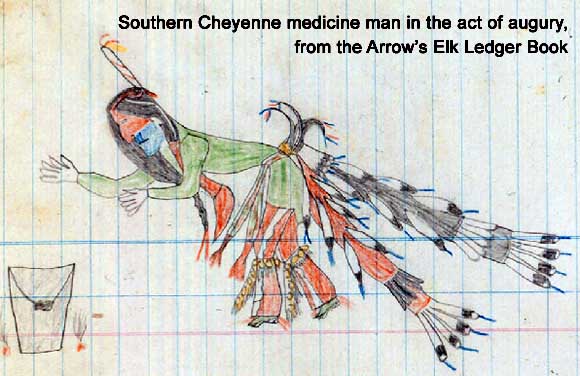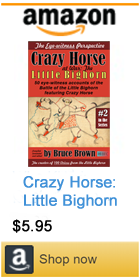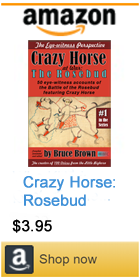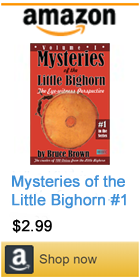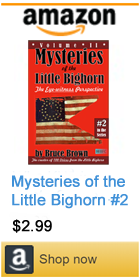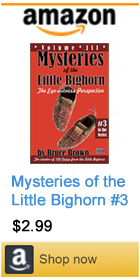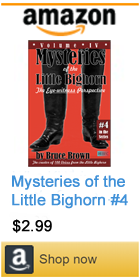|
||||||||||||
Bruce Brown's 100 Voices... Old Eagle's Story of the Battle
OLD EAGLE'S STORY OF THE BATTLE
Later on in the day Old Eagle and Two Bears had gone out to kill a badger. They brought back the carcass and slit open the belly, after an age-old Sioux custom. Removing the entrails, they allowed the blood to congeal. Then they propped up the wounded warrior so he could use the coagulated blood as a mirror. It was an ancient device for predicting the future. If a warrior saw a youthful image in the jelled blood, he would die young. If he saw the reflection of an aged person, he might count on living a long time. Old She Bear stiffened perceptibly as he saw himself much as he was -- a relatively young man. As he drew back in dismay, Two Bears stooped over him. He, too, saw his own youthful image reflected in badger blood. Before many hours had passed, Old She Bear breathed his last and in the early morning of the new day, Old Eagle and Two Bears painted the dead warrior's face red, and dressed him in his ceremonial buckskins. His widow cut off her heavy braids and gashed her legs with a sharp knife. Her keening could be heard for over a mile up and down the creek. Once her husband's body was ready and placed on a cottonwood log scaffold six feet high, she pitched the lodge over him for the last time. Using face paint, Old Eagle and Two Bears marked sacred symbols on the outside of the tepee. They would help to draw Wakan Tanka's attention to Old She Bear's departing spirit and insure its arriving safely in the Last Hunting Ground. Normally, the process of decorating the lodge for burial would have taken several hours. But the variety of clay pigment in the area was limited, so they had to make out with few colors. The painting and ornamentation were completed soon after midday, just as Old She Bear's widow and her aging aunt were striking the other lodges and loading their belongings on the pony drags for the move downstream to the Little Big Horn. Custer's Fall: The Indian Side of the Story by David Humphreys Miller, University of Nebraska Press, Lincoln, NE 1957 p 73 - 75
Old Eagle was also known as Amos Clown. His wife was Julia Iron Cedar, who was related to Crazy Horse. Although it has nothing to do with the battle per se (except as psychological backdrop), Old Eagle's story of the badger's blood prophesy provides one of those rare glimpses through the veil to the world as it was to the Sioux and Cheyenne. Concerning the mirror of coagulated badger's blood, David Humphreys Miller wrote: "Old Eagle told me the story of Old She-Bear and Two Bears seeing their reflections in badger blood. Few warriors had the courage to use this hair-raising method of looking into the future. Old Eagle assured me that he had been most careful to look in another direction while this was going on." The badger's blood prophesy was fulfilled the next day when Two Bears was killed by Reno's troopers early in the Seventh Cavalry's sneak attack on the huge Indian village. * * *
Miller frequenlty made pastel sketches of the Sioux survivors of the Battle of the Little Bighorn whom he interviewed. Some of Miller's portraits are exceptionally fine evocations of the historic personalities in their own right, such as his portraits of Lazy White Bull and Old Eagle and Black Elk late in life. Click here for information of David Humphreys Miller's sources among the Sioux, Cheyenne, Crow, Arikara and Apapaho. This material was excerpted from Custer's Fall by David Humphreys Miller, and appeared in American Heritage, June 1971. -- B.B.
|
||||||||||||



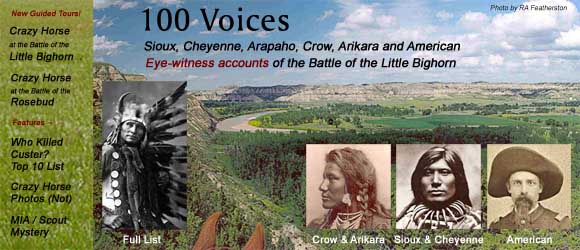
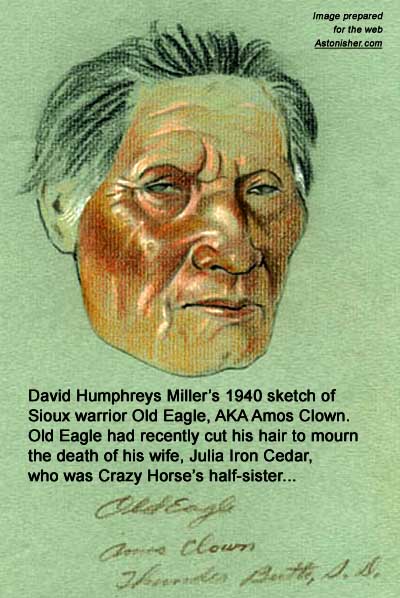
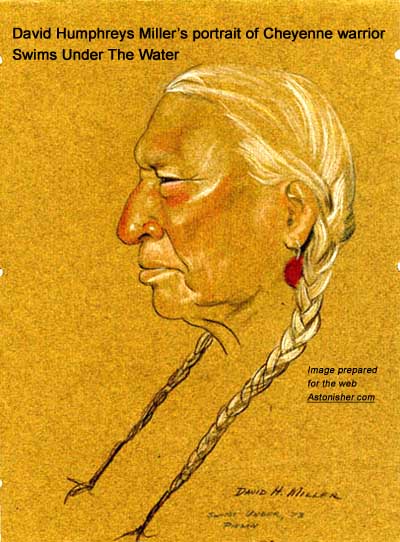 Although not born into the Teton Sioux, David Humphreys Miller was adopted late in life by both
Although not born into the Teton Sioux, David Humphreys Miller was adopted late in life by both 